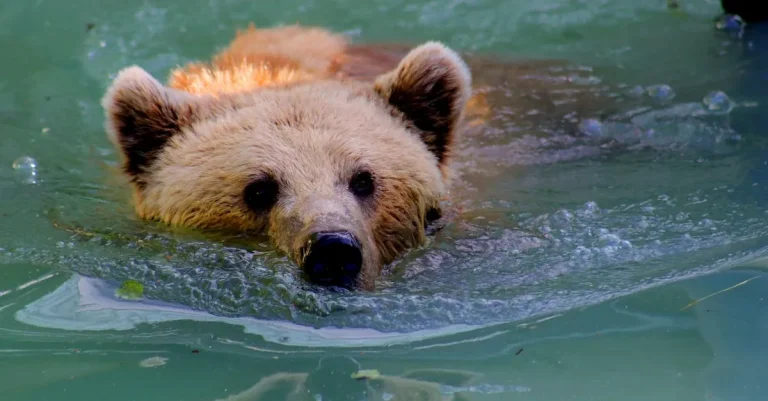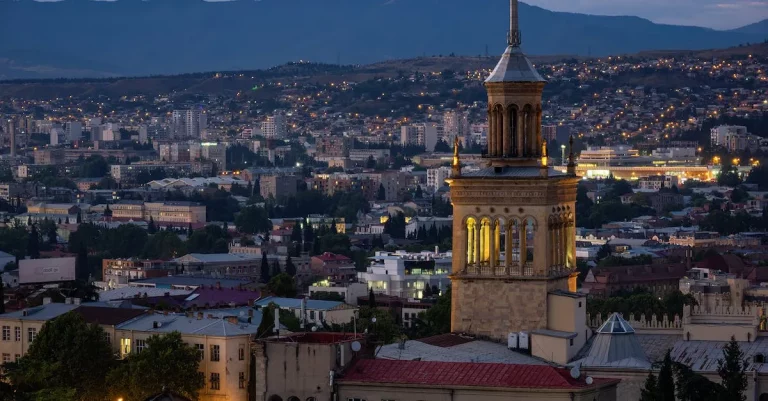Does It Get Cold In California? Examining The State’S Diverse Climates
With its sunny beaches and mild winters, you might assume California never gets cold. But if you’re short on time, here’s a quick answer: Yes, parts of California do get cold! However, the temperature varies dramatically across the large and geographically diverse state.
In this comprehensive guide, we’ll explore California’s array of microclimates and seasonal weather patterns. We’ll look at when and where cold temperatures occur, including in the mountains, deserts, and Northern California. You’ll learn how winter cold snaps differ across the state, what impact elevation has, and how climate change is altering California’s cold weather. Whether you’re planning a trip or considering moving to the Golden State, read on to uncover the intriguing truths about California’s cold weather extremes.
Winter Weather Patterns in California
While California is often associated with warm weather and sunny beaches, the state actually experiences a diverse range of climates, including cold winter weather in certain areas. Let’s take a closer look at the winter weather patterns in California.
Seasonal Differences
California’s winter weather can vary significantly depending on the region. The state can be divided into three main climate zones: coastal, inland, and mountainous. Each zone experiences different temperatures and precipitation patterns during the winter months.
In general, California’s coastal areas tend to have milder winters compared to the inland and mountainous regions. The coastal climate is influenced by the Pacific Ocean, which helps to moderate temperatures and prevent extreme cold.
However, there can still be significant variations in weather along the coast, with some areas experiencing cooler temperatures and more rainfall than others.
Moderate Coastal Areas
Along California’s coastline, cities like San Diego, Los Angeles, and San Francisco enjoy relatively mild winters. Temperatures in these areas rarely dip below freezing, and snow is a rarity. Instead, winter brings cooler temperatures and occasional rain showers.
Residents and visitors can still enjoy outdoor activities and even take a dip in the ocean, although the water may be chilly.
One factor that contributes to the mild climate in coastal areas is the presence of marine layers, which are cool, moist air masses that often form near the coast. These marine layers help to keep temperatures moderate and create the characteristic fog that can be seen along the coast.
Freezing Inland and Northern CA
Inland and northern parts of California experience colder winters compared to the coastal areas. Cities like Sacramento, Fresno, and Redding can see temperatures drop below freezing during the winter months.
Snowfall is also more common in these areas, especially in higher elevations, such as the Sierra Nevada mountains.
During cold spells, inland valleys and mountainous regions may experience frost and even occasional snowstorms. This can have an impact on agriculture and transportation, as well as outdoor activities like skiing and snowboarding.
Residents in these areas often bundle up in winter clothing and make use of heating systems to stay warm.
It’s important to note that while California does experience cold winter weather in certain areas, it still enjoys a relatively mild climate overall. The state’s diverse climates offer something for everyone, from mild coastal winters to snowy mountain getaways.
To learn more about California’s weather patterns, you can visit the National Weather Service website or the Climate.gov website for detailed climate data and forecasts.
Elevation Effects on Cold Temperatures
California is known for its diverse climates, and one of the factors that greatly influences temperature variations across the state is elevation. As you move from the coast to the inland areas and further up into the mountains, you’ll experience significant changes in temperature.
Let’s explore how elevation affects cold temperatures in different regions of California.
Low-Lying Valleys and Basins
In the low-lying valleys and basins of California, such as the Central Valley, temperatures tend to be milder compared to other parts of the state. The relatively flat terrain and lower elevation result in less extreme cold temperatures.
However, it’s important to note that these areas can still experience chilly winters, especially during nighttime.
Mountain Chill
As you venture into California’s mountainous regions, such as the Sierra Nevada or the San Gabriel Mountains, you’ll encounter a significant drop in temperatures due to the increase in elevation. The higher you go, the colder it gets.
For example, the top of Mount Whitney, the highest peak in California, experiences freezing temperatures even during the summer months. This dramatic change in temperature is known as the “Mountain Chill.”
Wind Chill
Another factor that exacerbates the cold temperatures in California is the wind chill. The state is known for its Santa Ana winds, which are dry, gusty winds that blow from the desert areas towards the coast.
These winds can make the air feel even colder than the actual temperature, especially in the winter months. Wind chill can be a significant factor in coastal regions, where the combination of lower temperatures and strong winds can create a biting chill.
It’s important to keep in mind that the effects of elevation on temperature can vary depending on the specific location and time of year. For more detailed information on climate patterns and temperature variations in California, you can visit the National Weather Service website or refer to local meteorological sources for up-to-date forecasts and data.
California’s Unique Microclimates
California is known for its diverse climates, thanks to its vast size and unique geography. The state is home to a variety of microclimates, which are small-scale variations in climate within a larger region.
These microclimates are influenced by factors such as elevation, proximity to the coast, and geographic features. Let’s take a closer look at some of California’s most notable microclimates.
Mediterranean Coast
The coastal regions of California enjoy a Mediterranean climate, which is characterized by mild, wet winters and warm, dry summers. This climate is influenced by the cool waters of the Pacific Ocean, which help to moderate temperatures and create a relatively stable climate.
Cities like San Francisco and Los Angeles experience mild temperatures year-round, with average highs in the 60s to 70s Fahrenheit (15-25 degrees Celsius). The coastal areas also receive a significant amount of rainfall, with the wettest months typically occurring between November and March.
Central Valley
The Central Valley, located in the heart of California, has a much different climate than the coastal regions. This region experiences hot, dry summers and cool, wet winters. The lack of coastal influence in the Central Valley allows temperatures to soar during the summer months, with average highs reaching the 90s to 100s Fahrenheit (30-40 degrees Celsius).
In contrast, winters are relatively mild, with average highs in the 50s to 60s Fahrenheit (10-15 degrees Celsius). The Central Valley is also known for its agricultural productivity, thanks to its fertile soil and abundant water supply from rivers and reservoirs.
Deserts
California is home to several desert regions, including the Mojave Desert and the Colorado Desert. These areas experience extreme temperatures, with scorching hot summers and chilly winters. During the summer months, temperatures in the deserts can reach well over 100 degrees Fahrenheit (38 degrees Celsius), while winter temperatures can drop below freezing.
The desert regions also receive very little rainfall, making them some of the driest areas in the state.
Extreme Cold Snaps and Storms
While California is known for its warm and sunny weather, it does experience occasional extreme cold snaps and storms. These weather events can be quite surprising for residents and visitors alike, as they are not as common as in other colder regions of the country.
However, when they do occur, they can have a significant impact on the state.
Polar Vortex Events
One phenomenon that can bring extreme cold weather to California is the polar vortex. The polar vortex is a large area of low pressure and cold air that typically resides near the North Pole. Occasionally, this vortex can weaken or shift, causing frigid air to spill southward into California and other parts of the United States.
These events can result in below-freezing temperatures and even snow in areas that are not accustomed to such conditions.
During a polar vortex event, it is important to take necessary precautions to stay warm and safe. Residents should ensure their homes are properly insulated and have functioning heating systems. It is also advisable to dress in layers and limit exposure to the cold weather.
Additionally, it’s a good idea to keep an emergency kit stocked with essential supplies such as blankets, food, and water.
Atmospheric Rivers
Another weather phenomenon that can bring cold and wet conditions to California is known as atmospheric rivers. These are long, narrow bands of moisture that originate in the tropics and can bring heavy rainfall, strong winds, and even snow to the state.
While atmospheric rivers are not always associated with extreme cold, they can contribute to colder temperatures and stormy weather.
Atmospheric rivers can have both positive and negative impacts on California. On one hand, they can provide much-needed precipitation, helping to alleviate drought conditions. On the other hand, they can also lead to flooding, landslides, and other hazards.
It is important for residents to stay informed about weather forecasts and follow any evacuation orders or safety precautions issued by local authorities during these events.
Snowstorm Impacts
When snowstorms hit California, they can have a significant impact on transportation, infrastructure, and daily life. While snowfall is more common in mountainous regions such as the Sierra Nevada, it can occasionally reach lower elevations and even coastal areas.
This can cause road closures, flight cancellations, and disruptions to daily routines.
During a snowstorm, it is important to exercise caution and avoid unnecessary travel. If travel is necessary, it is advisable to check road conditions and carry emergency supplies such as blankets, a flashlight, and extra food and water.
It is also important to drive slowly and leave plenty of space between vehicles to prevent accidents on slippery roads.
Climate Change Impacts on Cold Weather
Climate change has had a significant impact on weather patterns around the world, and California is no exception. While the state is known for its warm and sunny climate, it does experience cold weather in certain regions.
However, with the changing climate, these cold weather patterns are being affected in various ways.
Decreasing Freeze Days
One of the impacts of climate change on cold weather in California is the decrease in freeze days. Freeze days refer to days in which temperatures drop below freezing, and they are crucial for the growth and development of certain crops.
However, due to rising temperatures, the number of freeze days has been decreasing in many parts of the state.
This decrease in freeze days can have a significant impact on agriculture. Some crops, such as citrus fruits and almonds, require a certain number of chill hours to properly develop and produce a good yield.
With fewer freeze days, farmers may face challenges in growing these crops, leading to potential economic losses.
Changing Precipitation Patterns
Another aspect of climate change that affects cold weather in California is the changing precipitation patterns. While the state is known for its droughts, it also experiences periods of heavy rainfall and even snowfall in certain regions.
However, these precipitation patterns are becoming more unpredictable and extreme due to climate change.
For example, some areas in California that traditionally receive snowfall during the winter months are experiencing a decrease in snowpack due to warmer temperatures. This not only affects winter recreational activities but also has implications for water supply and management in the state.
Preparing for Extremes
As the climate continues to change, it is important for California to prepare for extreme weather events, including cold weather extremes. This includes implementing measures to mitigate the impacts of decreasing freeze days and changing precipitation patterns.
For farmers, this may involve exploring alternative crops that are more resilient to warmer temperatures and require fewer chill hours. It may also involve adopting innovative farming techniques, such as using protective covers or implementing irrigation systems that can adapt to fluctuating water availability.
In addition, the state can invest in infrastructure improvements to better manage extreme weather events. This can include upgrading drainage systems to handle heavy rainfall and investing in snowmaking technologies in areas that rely on winter tourism.
By taking proactive measures and adapting to the changing climate, California can better navigate the impacts of climate change on cold weather and ensure the resilience of its communities and ecosystems.
Conclusion
While stereotyped as always warm, California has a remarkably diverse climate with cold extremes in many areas. But global warming is impacting traditional winter chill across the state. Understanding California’s microclimates provides key insights on what to expect weather-wise, from frozen mountaintops to sunny beaches untouched by frost.








